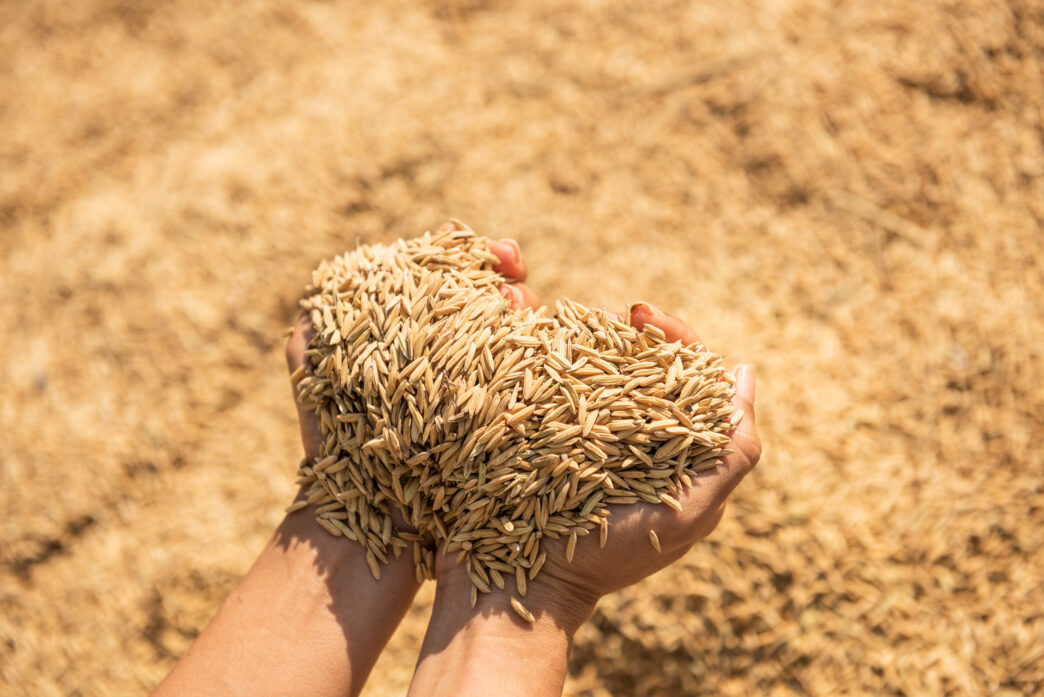India’s rice export dominance is a phenomenon reshaping global agricultural trade, drawing attention to a blend of agronomic tradition, economic factors, and market dynamics. Amidst diverse global competitors, India’s stronghold in the rice export market exemplifies its ability to leverage climate, culture, and governmental strategies, positioning its rice varieties as preferred staples in households worldwide. This blog delves into the key reasons behind India’s ascendant rice export market, analyzing the aspects that fuel its leadership and foster its sustained growth.
1. Rich Agricultural Legacy and Expertise in Rice Cultivation
India’s agricultural history spans centuries, with rice cultivation embedded in its tradition and expertise passed down through generations. Farmers in major rice-producing states like Punjab, Haryana, and West Bengal have honed their skills to yield high-quality rice with optimal harvest cycles. This legacy is not just a cultural advantage but an economic asset, as local knowledge of soil, climate adaptability, and pest control contribute to robust yields.
Additionally, the diversity of Indian rice varieties such as Basmati, Jasmine, and Sona Masoori allows India to cater to specific tastes globally. For instance, the long-grain Basmati rice has become a premium choice in Middle Eastern and European markets, while the fragrant Jasmine rice finds favor in Southeast Asian countries. This ability to meet niche preferences provides India with a competitive edge, enabling it to maintain a unique position in the market.
2. Climate Suitability for High-Yield Rice Production
Rice is a water-intensive crop requiring specific climatic conditions for optimum growth, which parts of India’s geography naturally support. The Indo-Gangetic Plains, blessed with fertile soil and ample rainfall, are particularly suitable for rice production. Similarly, regions with access to consistent monsoon patterns benefit from the predictable watering cycles essential for rice paddies.
Unlike competitors like Thailand or Vietnam, which rely on extensive irrigation to sustain rice cultivation, India’s natural environment reduces dependence on artificial irrigation, lowering production costs. This climate advantage allows Indian rice to be produced at a more affordable rate, fostering an efficient value chain from farm to global consumer.
3. Governmental Policies Supporting Rice Exportation
India’s government plays a pivotal role in boosting its rice exports through a mix of supportive policies, subsidies, and strategic trade agreements. Export incentives like the Merchandise Exports from India Scheme (MEIS) and production subsidies help Indian farmers and exporters remain cost-competitive. Additionally, policies that ensure minimum support prices (MSP) stabilize farmer incomes, encouraging them to produce surplus rice that can be marketed internationally.
India has also engaged in strategic trade agreements, lowering tariffs and establishing preferential trade routes with major importers such as Saudi Arabia and the United Arab Emirates. These relationships foster long-term demand for Indian rice, ensuring the steady flow of exports, even during fluctuating global market conditions.
4. Investment in Agricultural Technology and Infrastructure
India’s agricultural sector has witnessed significant technological transformation over recent years. Enhanced mechanization in farming practices, improved storage facilities, and advancements in logistics have reduced post-harvest losses and increased production efficiency. Modern milling processes allow Indian rice to retain its quality during transportation, appealing to foreign buyers who prioritize consistency and quality in imports.
Investments in port infrastructure further enable faster export turnover, reducing delays and ensuring that Indian rice reaches global markets in optimal condition. This infrastructure, coupled with improvements in transportation networks, helps Indian rice exporters meet the demands of international buyers efficiently and consistently, a key component in securing dominance in global rice exports.
5. Competitive Pricing Strategy and Cost-Effectiveness
The Indian rice export market benefits from competitive pricing strategies that position it as a cost-effective choice for importers. Thanks to low labor costs, climate-favorable farming, and government subsidies, Indian rice can be offered at lower prices than rice from other major exporters. The government’s efforts to keep export costs low make Indian rice an attractive option for importers in regions where budget constraints heavily influence consumer choice.
Notably, Indian rice’s price advantage does not compromise quality, making it a sought-after product even in high-income markets. The blend of affordability and quality assures that India’s rice varieties maintain a strong foothold globally, from Africa to the Americas.
6. Strategic Geographic Location
India’s geographic positioning acts as a logistical advantage in the export sector. Proximity to Middle Eastern, African, and Southeast Asian markets allows Indian exporters to deliver rice faster and at lower shipping costs compared to competitors like the United States. With shorter shipping routes, Indian rice remains fresher upon arrival, a crucial factor in retaining the quality standards demanded by international consumers.
Additionally, India’s well-established port infrastructure, notably ports like Kandla and Mumbai, plays a critical role in expediting exports. Efficient shipping operations and logistics support contribute to India’s ability to maintain a consistent export schedule, enabling timely deliveries and cultivating reliable trade relationships.
7. High Demand for Specialty Rice Varieties Like Basmati
India holds a near-monopoly on Basmati rice, a high-value, aromatic rice variety sought after worldwide for its unique flavor and texture. Basmati rice has become a staple for culinary enthusiasts and is often perceived as a luxury rice, especially in the Middle East and Europe. This premium market segment enables Indian rice exporters to command higher prices, generating substantial revenue and solidifying India’s status as a leader in the specialty rice market.
In addition, the government has safeguarded Basmati rice with a Geographical Indication (GI) tag, a certification that distinguishes it as a unique product of India. This designation prevents other countries from marketing rice as “Basmati,” thereby protecting India’s premium rice market and ensuring exclusive international demand for this variety.
8. Resilience in the Face of Global Market Fluctuations
The Indian rice export industry has displayed remarkable resilience amidst changing global conditions, such as fluctuating demand, trade restrictions, and the impacts of climate change. Indian exporters have diversified their markets, ensuring that they do not rely solely on a few regions for revenue. This diversification strategy allows them to sustain demand in case of downturns in any specific region.
Furthermore, the adaptability of Indian farmers to modify crop varieties and adjust production levels based on international demand demonstrates the sector’s flexibility. During periods of increased demand, India has efficiently ramped up production to meet global needs, maintaining its leadership even amidst challenges.
Conclusion
India’s dominance in the global rice export market is a multifaceted achievement, driven by a unique blend of agricultural heritage, strategic pricing, favorable geography, and governmental support. As demand for rice varieties like Basmati continues to grow globally, India’s role as a trusted and quality-centric supplier strengthens. With ongoing investments in technology, infrastructure, and trade relations, India is well-positioned to sustain and expand its influence in the international rice trade, securing its position as a powerhouse in global agricultural markets.
This blend of natural advantages, economic strategies, and cultural dedication not only reinforces India’s current stature but also lays the foundation for future growth, ensuring that Indian rice remains a staple on dinner tables across the world.










